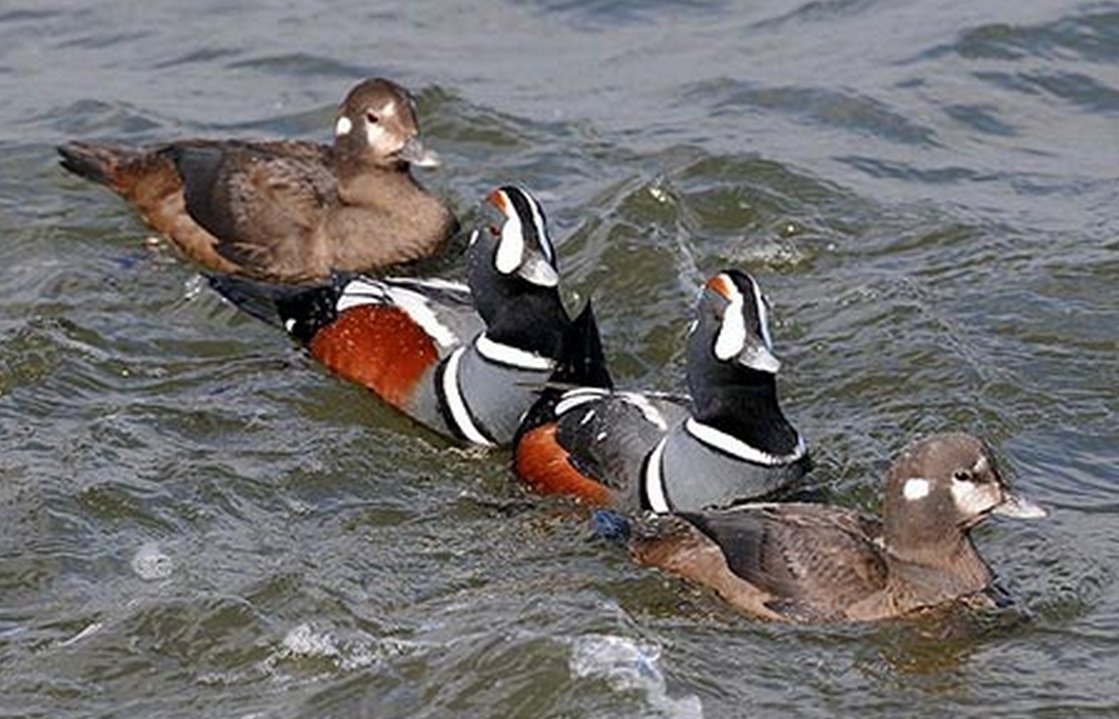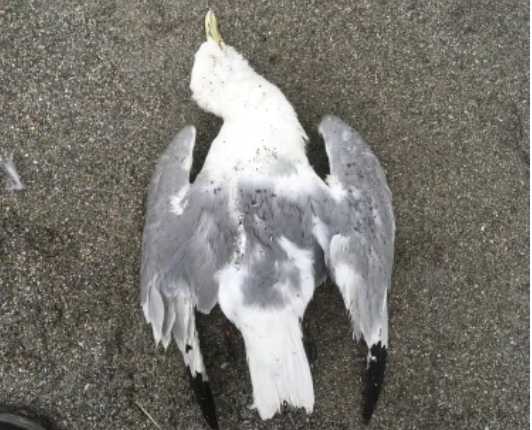
The United States is in the midst of a bird flu outbreak first detected in December 2021. Alaska Sea Grant’s Gay Sheffield has been closely monitoring the situation in the Bering Strait region as part of her work as the Marine Advisory Program agent based in Nome.
Avian influenza, or bird flu, is a disease caused by influenza viruses that occur naturally in wild aquatic birds. More than a dozen types of bird flu have been identified and most are considered “low pathogenic,” meaning that they cause no symptoms.
Some virus strains are highly pathogenic, however, and can spread between wild and domestic birds, resulting in widespread bird illness or death. Since 2005, highly pathogenic outbreaks in wild birds have become more common across the globe.
Sheffield has been contributing to the investigation of unusual bird deaths in the Bering Strait region and serves as a point of contact for local communities, answering questions and providing guidance on wildlife management issues. She has been collecting, preparing and shipping bird specimens to labs to learn whether the cause of death is bird flu, helping to document prevalence of the disease.
To keep local residents informed, Sheffield invited wildlife biologist Rob Kaler of the U.S. Fish and Wildlife Service,, and research wildlife geneticist Andy Ramey of the U.S. Geological Survey Alaska Science Center to give a Strait Science lecture last month, focused on Bering Strait birds. Ramey reported that there have not been any confirmed detections of highly pathogenic avian influenza in wild birds in the Bering Strait region to date. As of May 26, 2022, there had been 21 confirmed detections in the Aleutians, Southcentral, Southeast and Interior Alaska.
The Office of the State Veterinarian website maintains updated case counts in Alaska, including details about species and location. As of late June, additional cases have been documented, including in the Bethel region. Birds affected include mostly ducks and gulls, bald eagles, and more recently a raven and a sandhill crane.
Some 40 million domestic birds have died in the United States as a result of the outbreak, and more than 1,600 cases of bird flu have been detected in wild birds, according to national data maintained by the USDA. Ramey said in addition to geese and ducks, raptors such as eagles, owls, hawks and falcons appear to be among the most vulnerable to severe disease.
Ramey also shared that this outbreak is unlike any in the past. “The number of wild-bird detections in the last six months is more than 15 times greater than the total number of detections of highly pathogenic avian influenza of wild birds in Canada and the United States during all prior outbreaks.”
The outbreak poses minimal risk to human health, but Sheffield and others advise taking precautions around birds, especially if they exhibit unusual behavior. Bird flu has been passed to humans who handle sick birds.
“State and federal agencies are relying on reports from the public to track and document occurrences of avian influenza,” said Sheffield. “We can help by sharing what we observe when we’re out and about this summer.”
If you observe sick or dead birds, do not touch them. If possible, take photos and video, and submit a written report of the location, species, behavior and number of birds involved.
In the Bering Strait region, please report dead and sick birds to Gay Sheffield at 907-434-1149.
For other locations, use the U.S. Fish and Wildlife Service Alaska Sick/Dead Bird Hotline: 1-866-527-3358.
To learn more about birds in Bering Strait, including causes of death in seabirds other than highly pathogenic avian influenza, view the full Bering Strait Birds presentation on Alaska Sea Grant’s YouTube channel.
Source: Alaska Sea Grant
[content id=”79272″]





